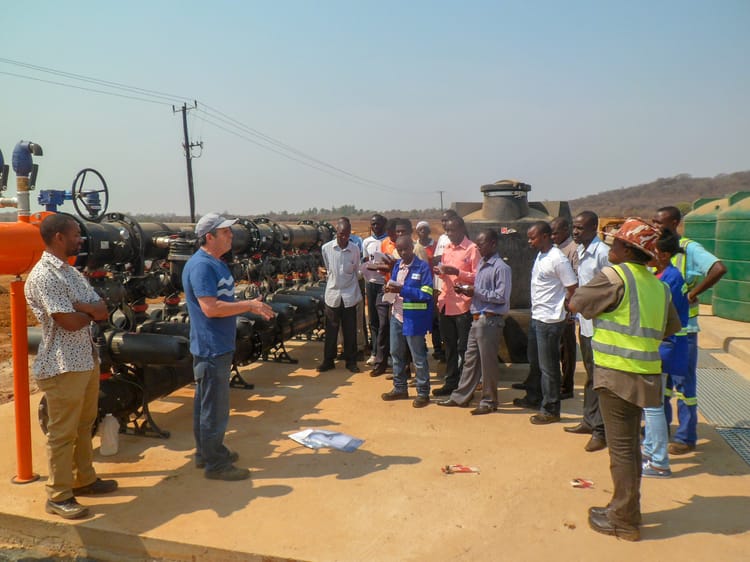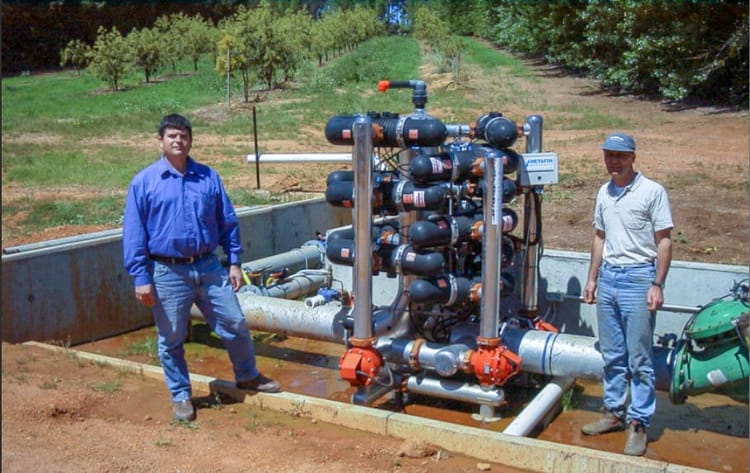Breaking Barriers in Precision Irrigation Adoption
Drip irrigation, celebrated for its precision and efficiency, is a game-changer for sustainable agriculture. It conserves water, cuts down on fertilizer use, and boosts crop yields, addressing some of the most pressing agricultural challenges. Yet, despite these advantages, it’s been adopted on only 4-5% of irrigated land globally. Why hasn’t this groundbreaking technology been embraced more widely?
I’ve been with Netafim for close to 25 years, leading and managing irrigation projects in three continents. When I started working in this field around the year 2000, we used to approach farmers to introduce new irrigation products. They often responded with, "No, I don't want to try... go to my neighbour and offer it to him…" Even when offered these products free of charge, they were reluctant to try them. This was very confusing to me. When I was in Israel in the 90s, I was always curious to try and adopt new technology and if someone offered me a new product, I’d eagerly accept. This discrepancy motivated me to explore why some growers embrace technology while others resist it, and to embark on a comprehensive PhD research project which took five years to complete. Here’s what I discovered:

The Economic vs. Behavioral Debate
Economically, the benefits of drip irrigation are clear. It boosts yield quality, improves water use efficiency, and cuts down on the wastage commonly seen with traditional irrigation methods. Despite higher initial costs and a somewhat complex management system, the overall return on investment should make drip irrigation an appealing option. However, behavioural economics suggests a different story..
Farmers, like everyone else, assess risks and benefits not solely based on profit but also through the lenses of effort, familiarity, and comfort with new technologies. Adopting drip irrigation involves significant changes to daily routines and requires an initial financial investment. Many farmers hesitate to embrace this technology due to the upfront costs and steep learning curve, preferring to continue with less efficient but familiar methods.
Risk Aversion and Short-term Thinking
One of the core concepts in behavioural economics is that individuals often prioritise immediate, less risky benefits over potentially larger but more uncertain, future gains. For many farmers, the immediate cost and effort of switching to drip irrigation outweigh the uncertain long-term benefits. This preference for a known routine over unfamiliar efficiency can stall innovation adoption. Moreover, the fragility of farming; rain, flood, wind and droughts makes farmers very susceptible to so many problems. The idea of adding another risk factor to the overall uncertainty that dominates their lives is simply not imaginable.

Cultural and Educational Barriers
There’s also a cultural dimension to consider. Farming practices are passed down through generations, and any new technology must not only be economically viable but also culturally adaptable. Educational initiatives that demonstrate the practical benefits and ease of transition can help, but they need to be robust and ongoing.
Given all these behavioural factors, how can we overcome resistance to new technology?
Listening, Sharing Knowledge, Building Trust
Over the past 20 years, I have worked with farmers in Israel, Australia, and Africa. When I first meet them in the field, I never regret just staying quiet and listening. I don’t try to tell them what they need because no matter how knowledgable and experienced we are, they always know more about their land and crops than any consultant who has never been to their site.
After listening and understanding their pain and challenges, I try to suggest different tools, processes, and methodologies. I don’t try to convince them to buy anything, but rather share knowledge and experience and support them in implementing these suggestions in their farming operation in baby steps.

By listening, sharing knowledge and providing support, a trust is built, and that’s the key to opening their minds to trying something new and adopting new technologies.
Looking Forward
As we look towards a future where water and arable land become even scarcer, technologies like drip irrigation aren’t just optional; they’re necessary. Understanding and addressing the human factors that influence technology adoption is as crucial as the technology itself.
Understanding and addressing the multifaceted barriers to the adoption of drip irrigation (and other technologies) is crucial for its broader integration into global farming practices. With targeted support and a deeper appreciation of the local contexts in which farmers operate, the path to widespread adoption of drip irrigation, and ultimately more sustainable agricultural practices can be significantly smoothed.

